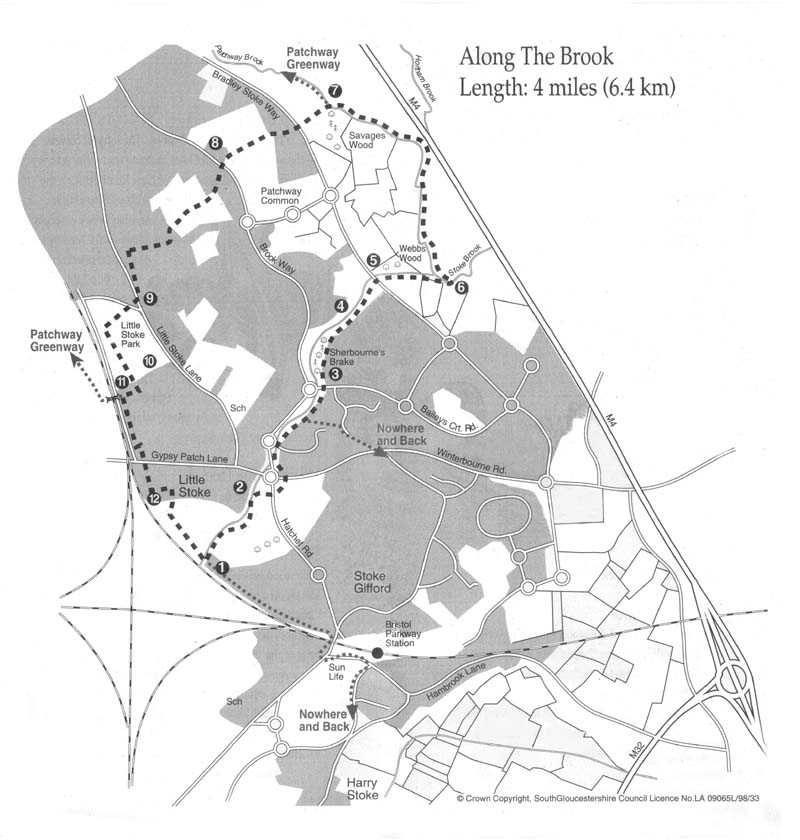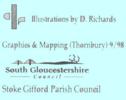Walk Along the Brook

This is the junction of four brooks. The longest travels all the way from the MoD site, passing under the A4174 (Station Road), and again under New Road through the playing fields of Filton High School. Another brook emerges from the same source feeding the lake created on the Sun Life site, whilst a third W. travels from Patchway adjacent to Station Road. Finally Stoke Brook, which arises from the overflow near Filton Runway.
Whitebeam Tree
This was planted in 1995 to
celebrate the centenary of Mrs. Higgins.
Sherbourne's Brake
This wood was planted
during the 19th century. It stands on a piece of land originally
known as Hales Common, and may have been named in honour of Harry
Sherbourne, who was living at Watch Elm Farm at the time of the 1851
Census - he was described as a nephew. The largest trees are
protected Turkey Oaks at the top of the wood, but look for the felled
Poplar close to where the cycle path enters the wood from the south.
Several of its off-spring are growing nearby. This wood is an
excellent place to see bluebells in spring.
Ancient Hedge
Believed to be 900 years old;
it follows an old footpath linking Stoke Gifford with Patchway
Common.
Webbs Wood
Believed to be ancient woodland.
The spring flora are beautiful; look for the many multi-stemmed trees
which were once coppiced to provide wands of woods for various uses.
The large, multi-stemmed ash close to the western entrance to the
wood, is particularly noteworthy.
Lakeland
Formed by the damming of the three
brooks which flow through Bradley Stoke and which meet at this
 point. You can see
moorhens, ducks and dragonflies.
point. You can see
moorhens, ducks and dragonflies.
Savages Wood
The northern edge of the wood
follows the original boundary line between the parishes of Patchway
and Stoke Gifford - woods which follow such boundaries are usually
very old. You can find a mixture of many tall straight trees - oak,
ash, beech and hornbeam. The latter two species, found in the south
of the wood, are especially good in the autumn.
Dewfalls Pond
Once used by thirsty
livestock. The cobbled edges would have eased the access for the
animals, and the pollarded crack willows are worth observing. This
pond tends to dry out completely during the summer.
Little Stoke Park
This land once belonged
to Little Stoke Farm, a part Elizabethan building which stood on Clay
Lane.
Drinking Trough
The old stone trough
between the changing rooms at the southern edge of the Park.
Old Oak Tree
Next to the allotments there
is one very old oak tree. The hedge next to the tree marks the old
route of the stream which crossed Gypsy Patch Lane and now runs
parallel to the railway line. The old watercourse is still there in
the hedge.
© Stoke Gifford Parish Council

